Disclaimer: This blog post contains affiliate links. If you make a purchase through these links, I may earn a small commission at no additional cost to you. Learn More. Thank you for supporting our garden community.
Why are My Seeds Not Germinating? Fix These Common Issues
Few things are more frustrating for gardeners than planting seeds and waiting, only to see bare soil days or even weeks later. If your seeds aren’t sprouting, don’t worry—you’re not alone. Several factors can prevent seeds from germinating, and understanding these issues can help you fix the problem and get your garden growing.
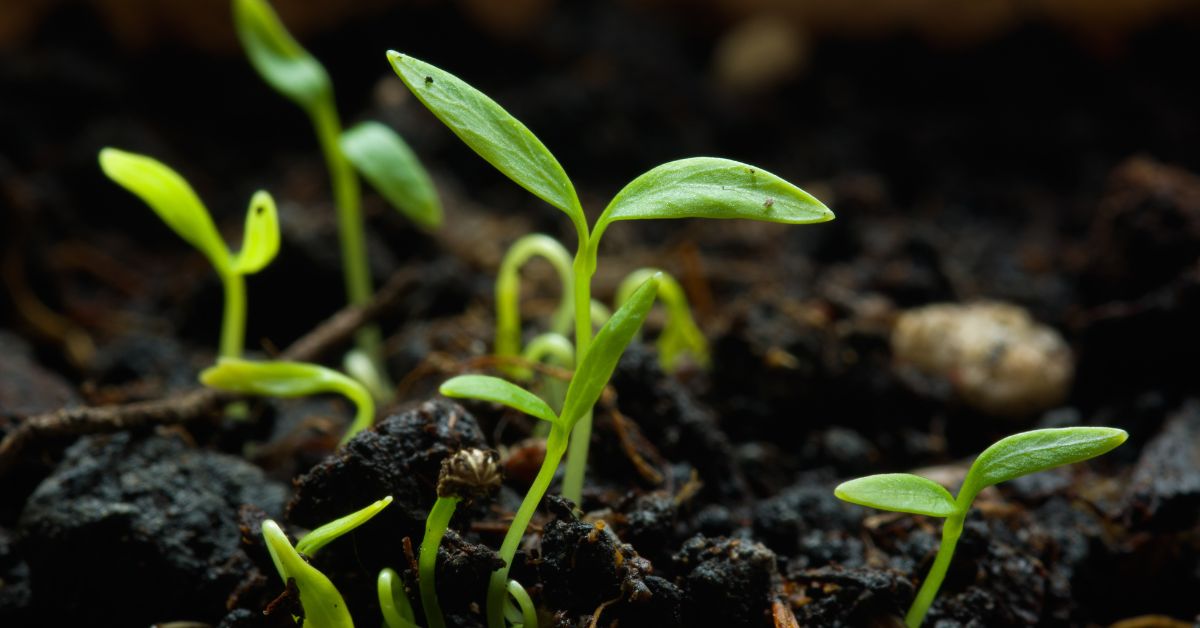
Why are My Seeds Not Germinating?
Sometimes we plant seeds and we wait, and wait … and wait, only to find that the seeds never actually come up.
This is very frustrating, but surprisingly easy to fix in almost all cases.
There are a few reasons why your seeds may not be germinating as well as you hoped, which we are going to cover today.
Seeds are living organisms; they are alive in a dormant state. So it’s important to give them the right conditions to germinate, survive, and thrive.
So let’s get right into why your seeds are not germinating.
Products
To buy high-quality garden seeds, check out Burpee.
For a wide selection of perennial garden plants, check out Nature Hills Nursery.
For gardening equipment, check out Bootstrap Farmer.
Your Seeds are too Old
If you have some seed packets from who knows how long ago and you try to germinate them, they may not come up. Although seeds technically don’t expire, they have a “packaged for” year, which means they are only meant to be grown for that year.
They become less and less viable in the following years after the “packaged for” year.
However, this doesn’t mean that you have to throw the old seeds out. Instead, just perform a simple germination test.
To do this, pre-moisten a paper towel for each of the seed varieties you are testing. Make sure to squeeze out the excess water so that it’s not dripping wet.
And make sure to label each paper towel as well! Don’t tell yourself that you’ll remember each one, because you won’t.
Then place about 10-20 seeds onto the paper towel and fold it over itself to cover the seeds. 10-20 seeds is usually enough to make an accurate viability conclusion.
Then place the paper towel into a Ziploc bag and place the bag in a warm spot, like on a vent or radiator. They should germinate within about 1-2 weeks, although some plants may take longer.
After this time, check to see how many seeds have germinated. If 10 out of 20 seeds have germinated, then your germination rate is 50%. In this case, I would plant 2-3 of these seeds in each hole.
If 5 out of 20 seeds have germinated, then the germination rate is 25%. In this case, I would plant about 4-5 seeds in each hole. The calculation is pretty simple; just do the number of germinated seeds divided by the total number of seeds, times 100. This number is the germination rate.
So you can still use old seeds, just make sure to put more of them into the planting hole.
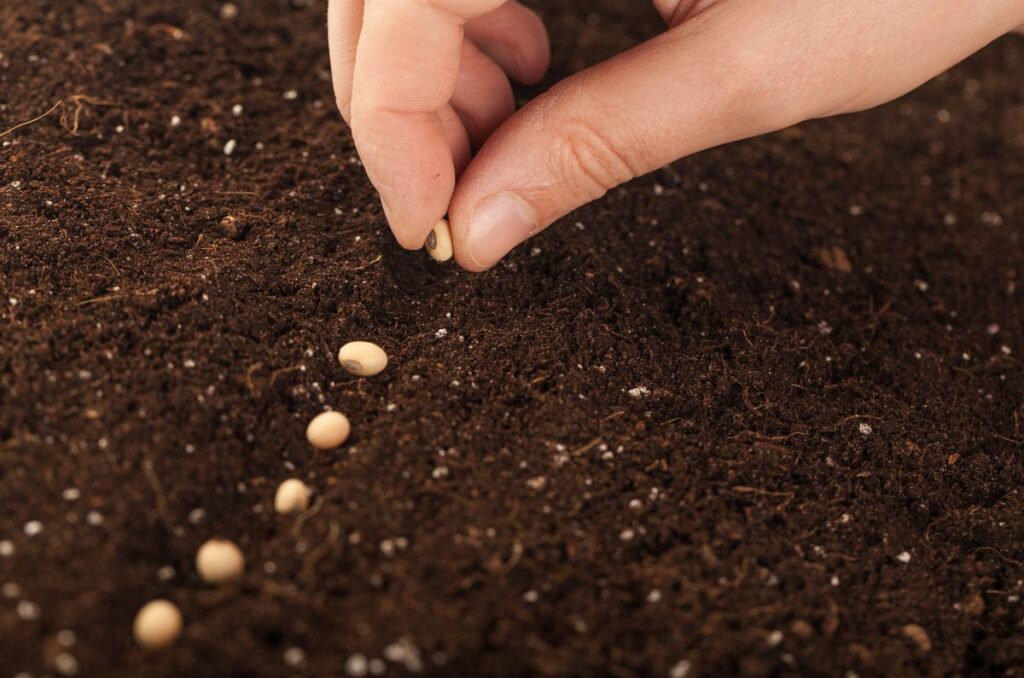
You Planted the Seeds too Deep
In this case, it’s possible that your seeds have germinated, but they just can’t reach the top of the soil to see the light. And of course they die shortly after.
On each seed packet, there is a “planting depth” that is not really a recommendation.
Of course, none of us really follow these guidelines perfectly, but it’s there for a reason. That being said, there are some general rules for the size of the seed and planting depth.
The smaller the seed, the closer to the surface it should be planted. For example, poppies have a very tiny seed and they actually need to be sown directly on the surface of the soil, so that they don’t get buried and die.
As the seeds get bigger, you should plant them deeper in the soil. For example, beans and peas have really big seeds and they should be planted one inch below the surface of the soil.
This all has to do with the nutrient storage of the seed variety.
The larger the seed, the more energy it holds inside it, meaning it can get through the soil easier. If the seed is smaller, then it has less energy stores and has to work harder to break through the soil.
For the beginner gardeners, I would follow the planting depth for each variety on the seed packet. Soon you will find the sweet spot for planting most seeds.
Maybe Your Soil is Bad
Seeds need to be germinated in well-draining soil that has plenty of airflow and oxygen running through it.
If the soil is too compacted, then the roots of the seeds won’t be able to grow. So if your soil is very clay-heavy or lacks drainage, then you have to amend it to increase the airflow.
I always like to add some perlite, which reduces compaction and allows for more drainage and airflow. It doesn’t interfere with the roots of the seedlings, so it’s perfect for seed starting.
Your Seeds are too Dry or too Wet
There is one main thing that breaks a seed’s dormancy and allows it to germinate: water. If water is not present, then the seed will ultimately not germinate.
Make sure to keep the seedling soil consistently moist until the seeds germinate. You can also cover the soil with a humidity dome or plastic wrap to help to keep in some moisture.
However, sometimes there is too much water. This can cause your seeds to rot inside the soil, and therefore die before they germinate.
To avoid this, just don’t overwater your seeds. Wait until the surface of the soil is dry before giving it more water.
Generally, have a good watering schedule for your seedlings.
Additionally, it’s a good idea to keep a fan running in front of your seedlings. This will help to circulate the air, which means moisture and humidity won’t build up as much.
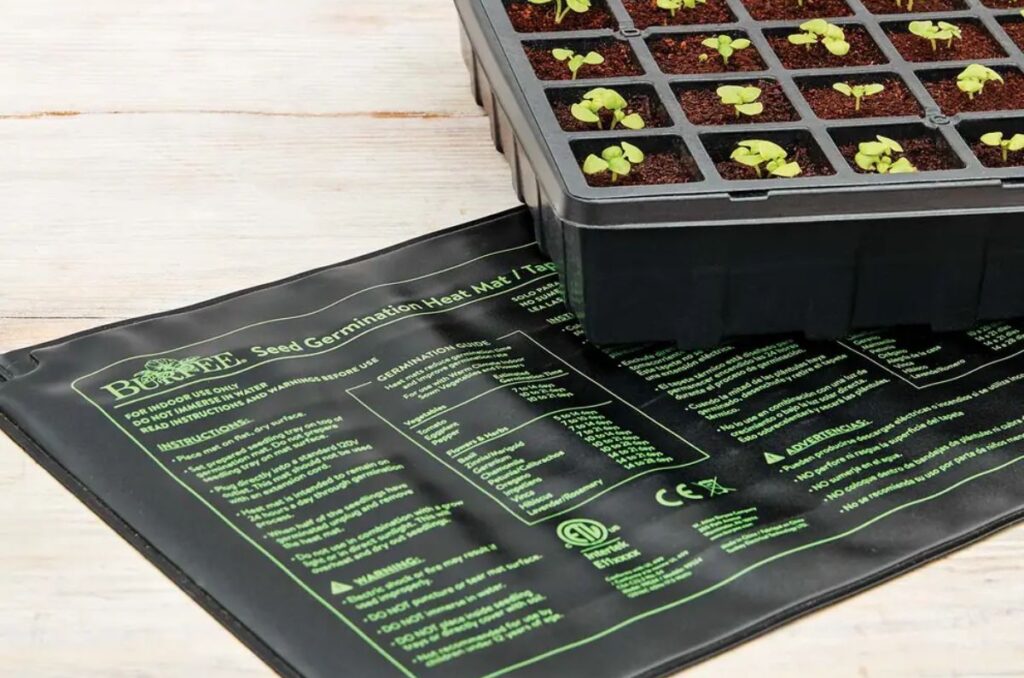
It’s too Hot or too Cold
Different seeds have different needs when it comes to the temperature needed to germinate.
When the soil is too cold, germination rates drop or stop completely. But when it’s too hot, the seeds can dry out before sprouting.
But let’s be honest, most of us are not going to have a problem with the indoor temperatures being too hot.
Because we are starting our seeds indoors in the winter, it is probably a little bit cooler in your house. I actually start my seeds in the basement, so it’s at least a couple of degrees colder down there.
This makes it even more important to control the temperature. But instead of increasing the number on the thermostat, making everyone sweat, we just need to control the temperature around our seeds.
This can be achieved with a heat mat. A heat mat is a mat that is plugged into an outlet and heats up. When you place your seedling cells on top of the mat, the heat will transfer to the soil and warm up the seeds by a couple of degrees
This is only necessary for long-season, warm weather crops, like tomatoes, peppers, cucumbers, eggplant, and squash. Short-season, cold weather crops, like lettuce, spinach, and parsley, do not need supplemental heat.
If you don’t want to buy this high-quality heat mat, you can just put all of your seedling cells on top of your furnace, by the fireplace, or on a vent.
The Seeds Didn’t get Enough Light
I know, it’s true that most seeds don’t need light to germinate. In this case, just plant them in their holes and they will be good.
However, there are some exceptions, like poppies, celery, and lettuce, that do require some light to germinate.
For these varieties, sowing on the surface of the soil is ideal, as it allows light to reach the surface of the seeds. If they are buried too deep, then they won’t be able to see the light.
But then you’ll say, “won’t the seeds dry out if they are exposed to the air?” And you would be right.
To avoid this, make sure to press the seeds against the soil to ensure good contact and cover it with a piece of plastic wrap, making sure it’s tight. This will lock in the humidity and keep the seeds moist until germination.
Pest and Disease Issues
This is more common for gardeners starting their seeds outdoors.
Large pests like rodents, rabbits, and birds will dig up seeds to eat. This is obviously not ideal because it can waste weeks of your time in the garden.
To avoid this, just cover the seeded area with a very fine mesh row cover, which prevents the pests from digging.
But we can also have disease issues instead, especially when considering overwatering.
Certain fungi can colonize your seedling mix when it is kept overly wet. You will start to notice white or green patches on the surface of the soil.
If left untouched, the fungi will eventually take over and eat your seeds.
To prevent this, just use a fan to help circulate the air. This means that moisture and humidity won’t build up as much.
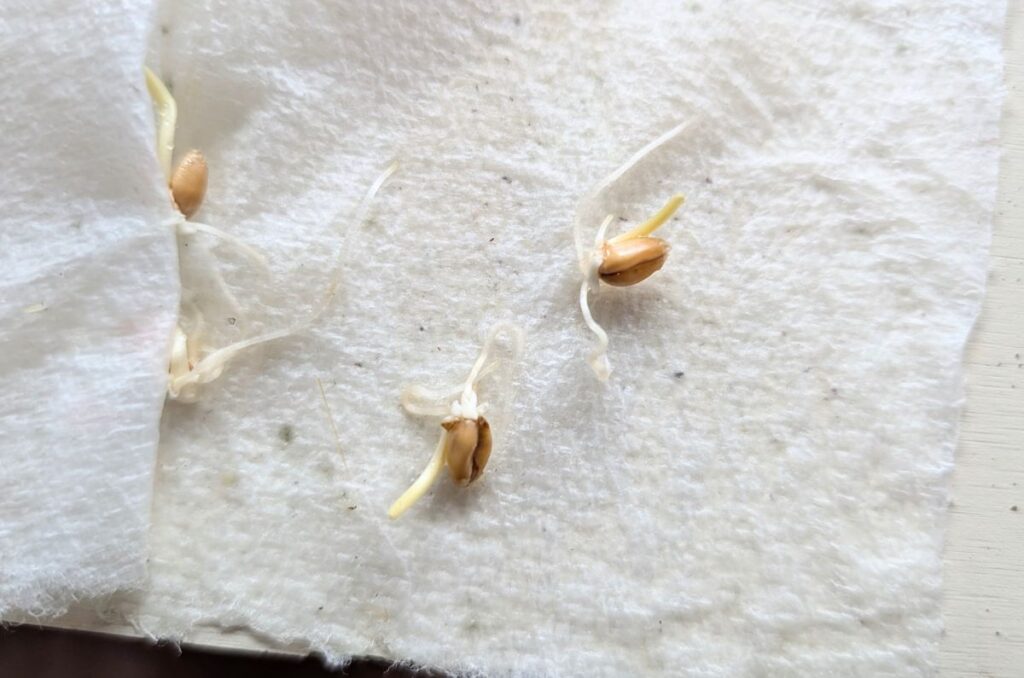
Some Seeds Actually Need the Cold
It may sound weird at first, but some seeds actually need to be exposed to a period of cold and wet conditions before they are able to germinate.
This is known as cold stratification and it is especially common with flowers, perennials, and other long-lived plants. It is necessary to simulate winter.
Just think about it: seeds fall from a tree in the fall and they immediately germinate because it rains the day after. But then the young plants die quickly because winter comes. How could a species survive these conditions?
The answer is cold stratification. The seeds won’t germinate until they have experienced and passed the cold period, which makes them germinate in the spring. Then they have a whole season before the next winter, which allows them to survive.
To mimic this, place the seedling cells with the seeds that need cold stratification into the fridge, not the freezer. The freezer is way too cold! The fridge provides the perfect cold temperature for the seeds.
Most seeds only need a couple of weeks to stratify, but some may need a month or two, depending on the variety.
Here are some plants that need cold stratification:
- Lavender
- Garlic
- Artichokes
- Most perennial flowers
- Most native wildflowers
- Trees and shrubs, like maple
- Flowering bulbs
Just Be Patient!
Different seeds have different lengths of time needed to germinate.
Some seeds, like radishes, germinate within a few days. While others, like parsley, can take 3-4 weeks. You don’t have to check up them every day like I do!
We all get excited and want to see those first seeds germinate. But just remember that every time you check on the seeds, you ruin their growing conditions and it’ll just take more time to germinate.
If you do everything right, you won’t have to worry about if the seeds will sprout, because they just will!
Frequently Asked Questions
Above all, seeds need water to germinate. Make sure the soil is evenly moist. Some seeds need light to germinate, while others need cold stratification.
Most seeds will germinate after 1-2 weeks. However, some varieties need 3-4 weeks to germinate. It all depends on the type of plant.
You can’t just force your seeds to germinate. You have to give them the proper conditions to germinate and grow.
Based on the germination rate, you can plant seeds from a seed packet that never germinated. Just make sure to sow more seeds per hole next time.
As long as there were no diseases growing and otherwise no problems with the soil, then you can reuse it next time you germinate seeds.
Even More Gardening Ideas
Here are a few more posts to help your garden ideas take root:
- How to Grow Tomatoes that are Juicy and Delicious
- How to Grow Onions Perfectly Every Time
- 9 Practical Uses for Sawdust in the Garden
If you liked this article, make sure to share it with your friends and family members who are also looking to grow a productive vegetable garden. Also, consider signing up for our email newsletter; don’t worry, we won’t send you spam, just fresh gardening ideas every week!
If you want to learn more about vegetable gardening, check out The Real Gardener on LinkedIn, YouTube, and Pinterest.
Pin this post for later:
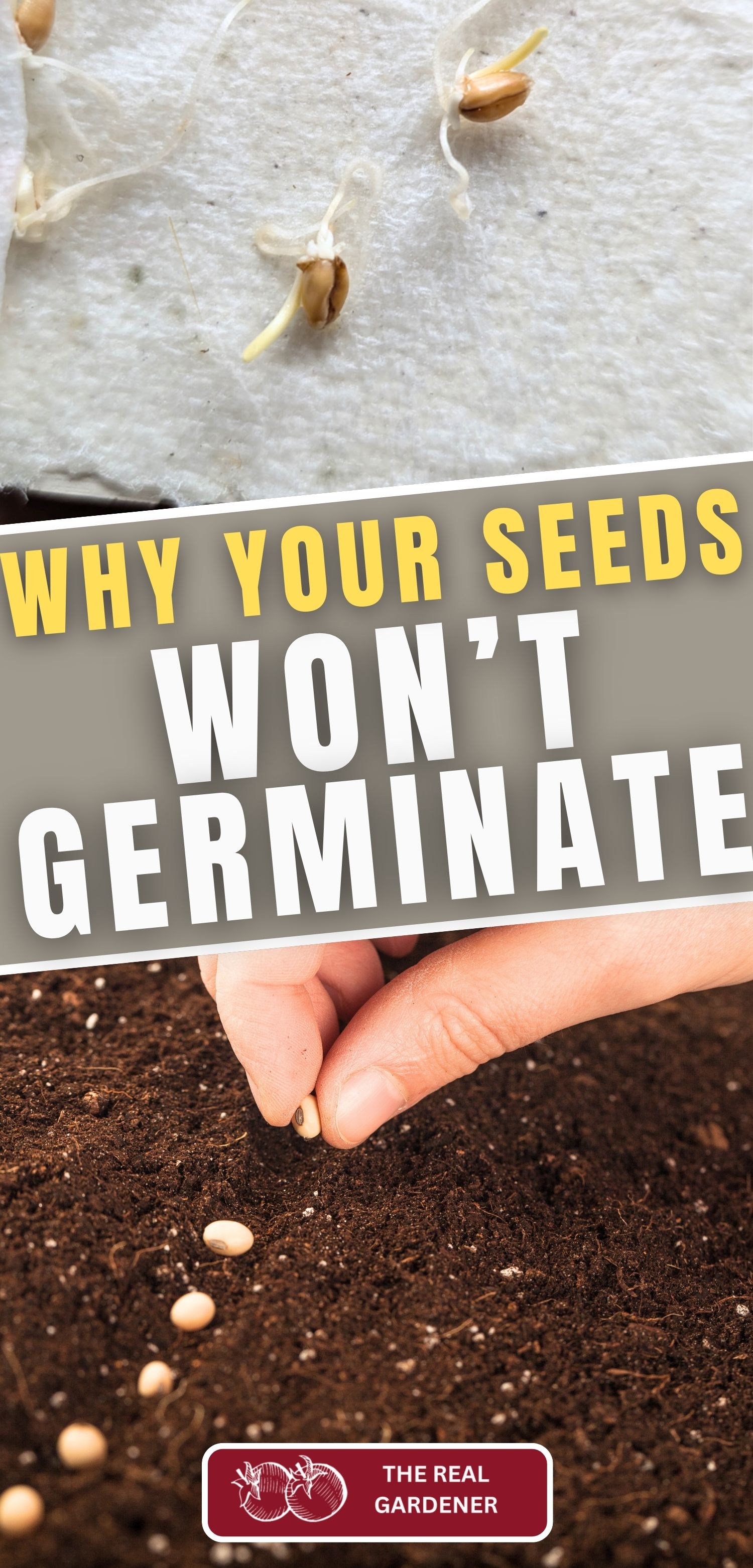
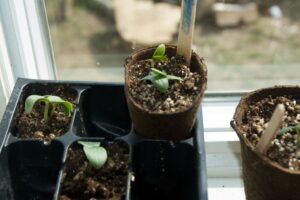
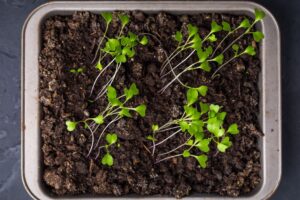
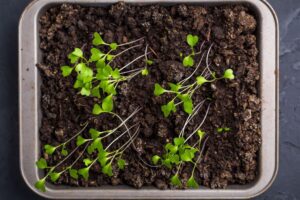
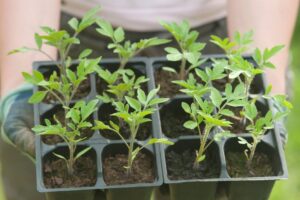
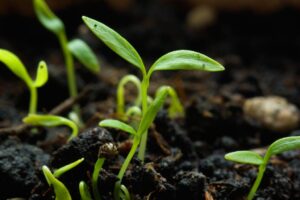
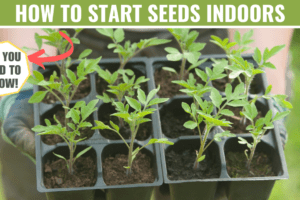
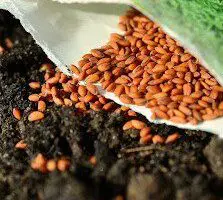
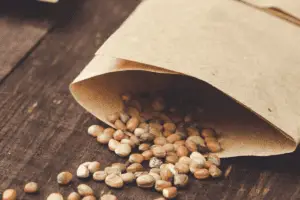
Leave a Reply